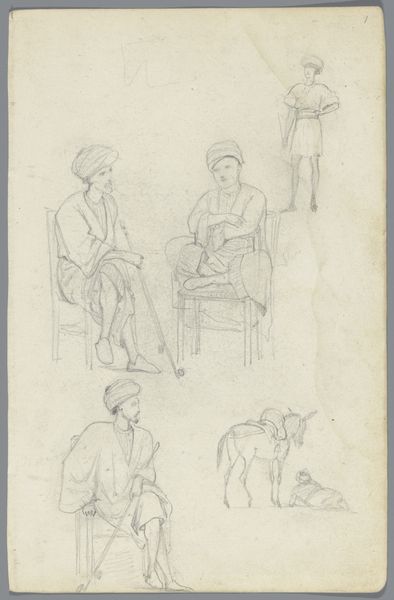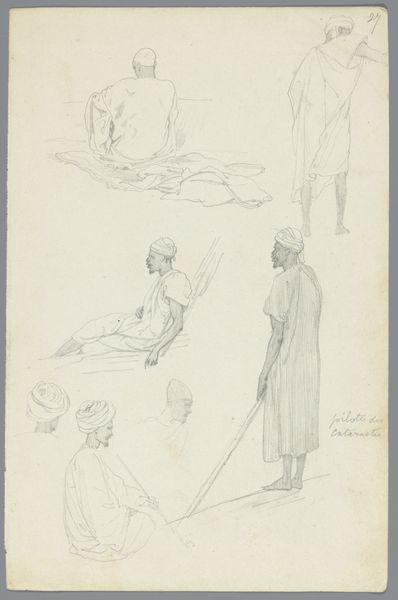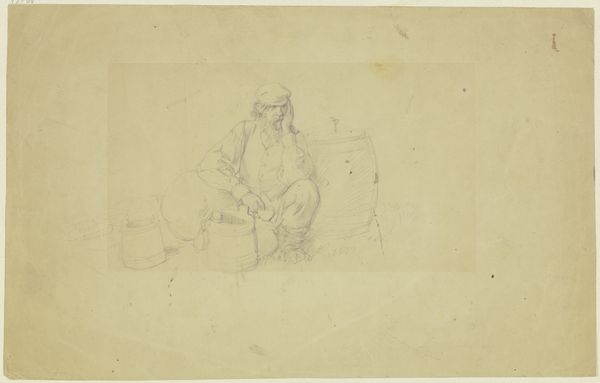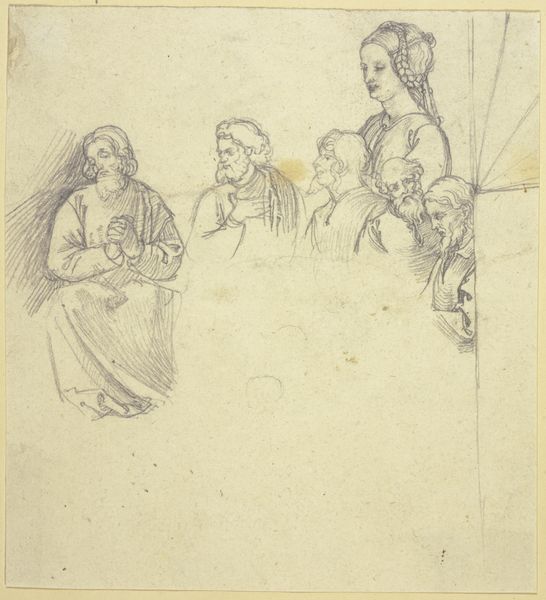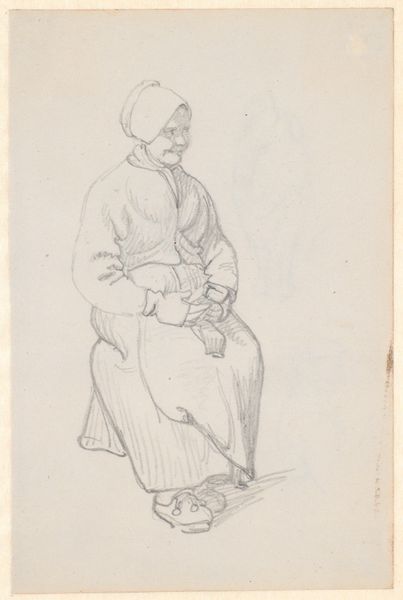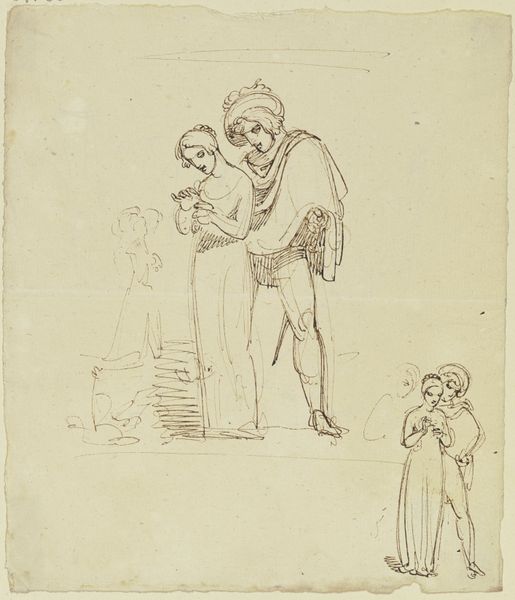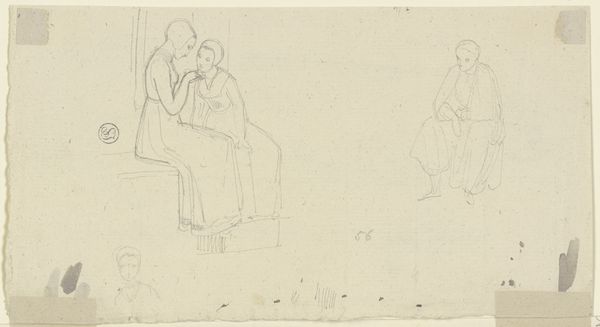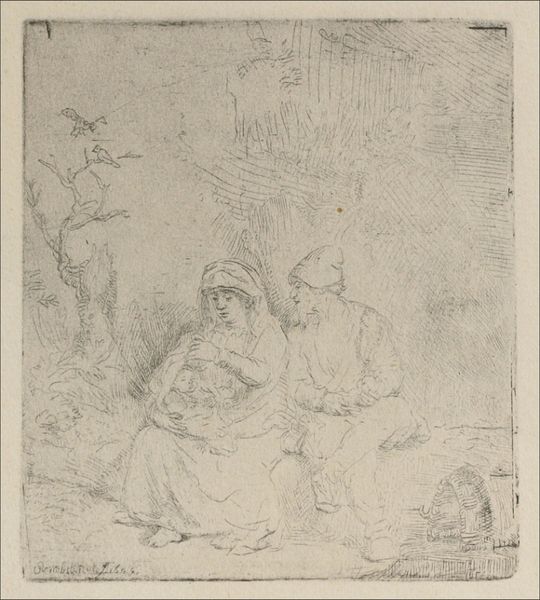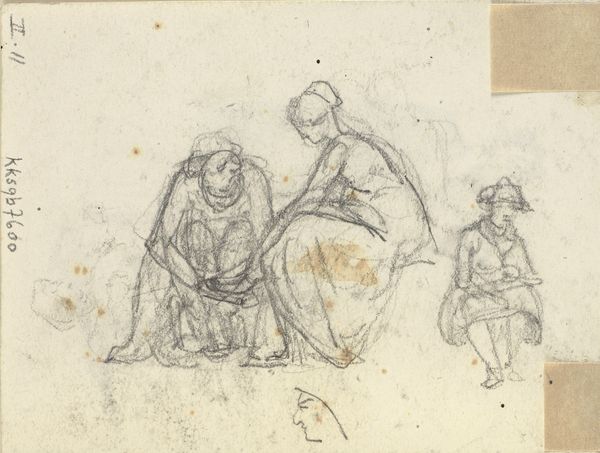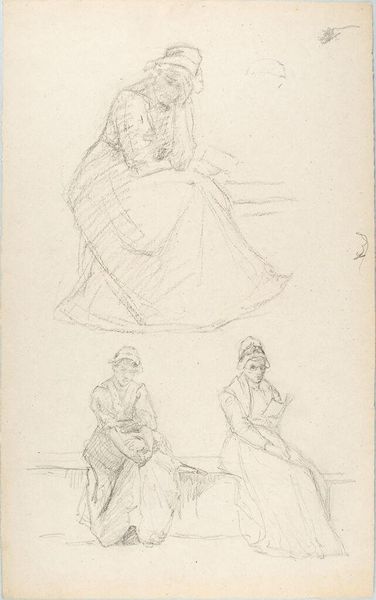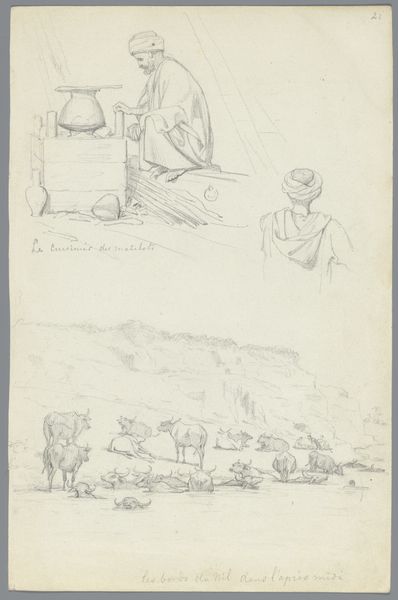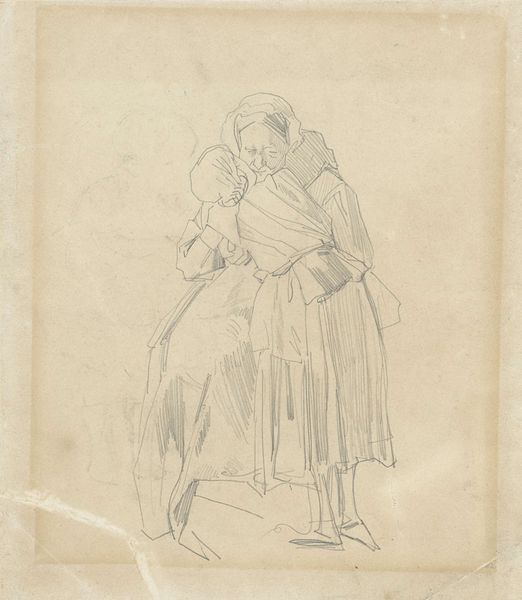
Twee op stoelen zittende mannen in Oosterse kleding en een op de grond zittende Oosterse bedelaar c. 1858 - 1859
0:00
0:00
drawing, pencil
#
portrait
#
drawing
#
comic strip sketch
#
light pencil work
#
sketch book
#
personal sketchbook
#
idea generation sketch
#
sketchwork
#
ink drawing experimentation
#
sketch
#
pencil
#
orientalism
#
sketchbook drawing
#
genre-painting
#
storyboard and sketchbook work
#
sketchbook art
Dimensions: height 191 mm, width 125 mm
Copyright: Rijks Museum: Open Domain
Willem de Famars Testas created this pencil drawing of men in oriental clothing in the nineteenth century. In this sketch, the artist depicted oriental figures, possibly in North Africa, as suggested by the title, but also by the clothes the figures wear. The drawing provides a glimpse into the colonial mindset prevalent in Europe at the time, where non-Western cultures were often romanticized or exoticized. The composition creates meaning through visual codes and cultural references, reinforcing the stereotypical view of the East as a place of leisure and poverty. Orientalism, as Edward Said named it, served to legitimize European colonial rule by creating a binary between the progressive West and the supposedly backward East. Examining the artist's personal history, travel logs, and exhibition records, can further contextualize this artwork and shed light on the social conditions that influenced its creation. The meaning of art is always contingent on social and institutional context.
Comments
No comments
Be the first to comment and join the conversation on the ultimate creative platform.
